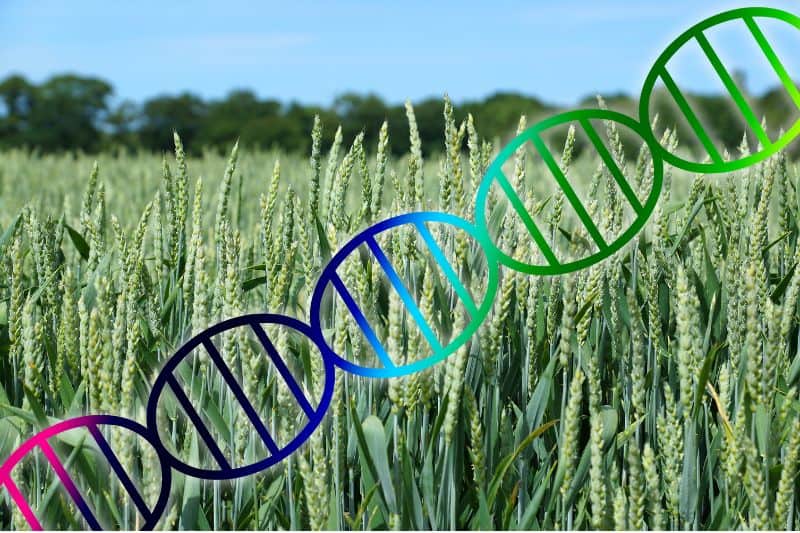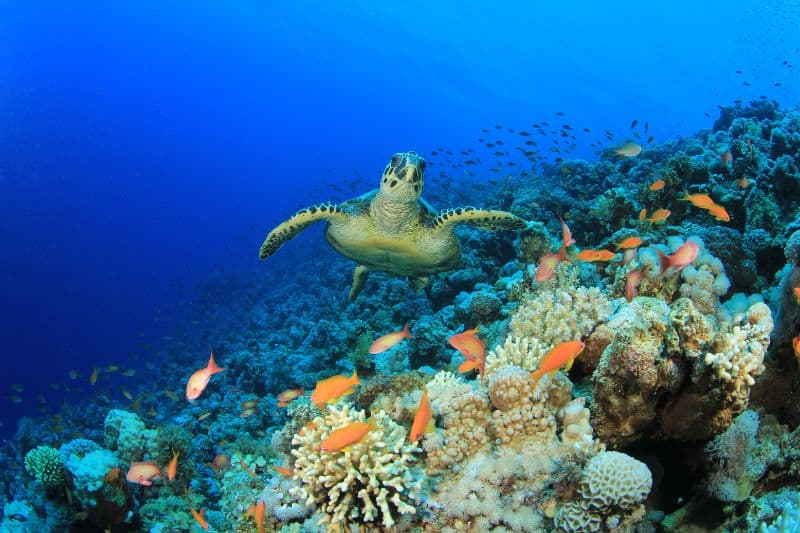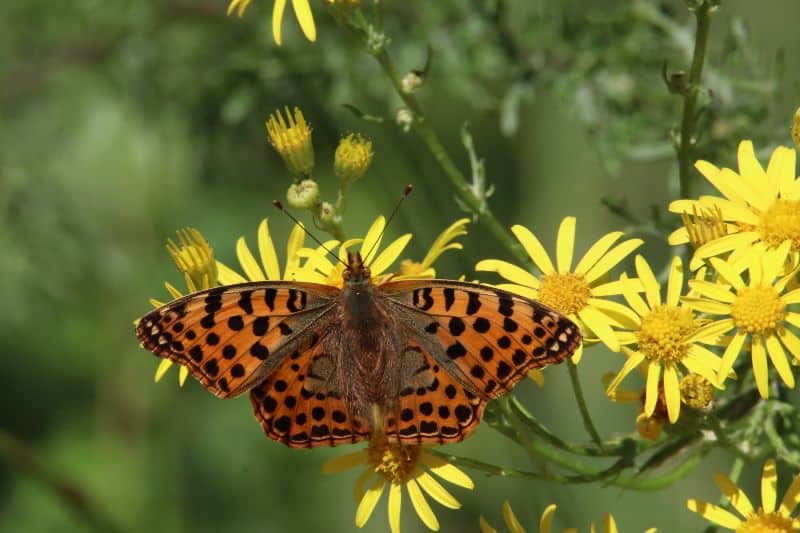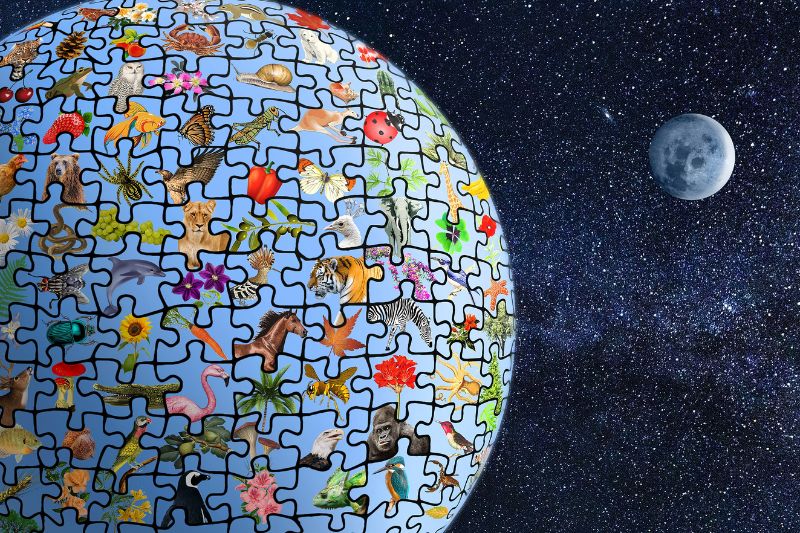Biodiversity refers to the various life forms that exist on Earth, including animals, plants, microorganisms, and the entire ecosystem they live in. It manifests as biological resources, including genes, species, organisms, and ecosystems.
Thus, the four main levels of biodiversity;
- Species biodiversity
- Genetic biodiversity
- Ecosystem biodiversity
- Global biodiversity
Because of these characteristics, biodiversity plays a fundamental role in maintaining the aesthetic value and the integrity of the natural environment and helps promote the overall well-being of all plant and animal life.
This calls for the need for biodiversity conservation for the survival of all living things and their natural habitat.
Hence, biodiversity conservation is all about protecting all organisms and species within their natural habitats with the aim of ensuring intragenerational and intergenerational equity.
Activities such as habitat fragmentation, human disturbance, and habitat loss must be adequately curtailed to enrich biodiversity conservation measures. Herein are the types, importance, and methods of biodiversity conservation.
We should preserve every scrap of biodiversity as priceless while we learn to use it and come to understand what it means to humanity.
– E. O. Wilson
Types of Biodiversity Conservation
Some of these types include:
1. Genetic Diversity

Genetic diversity encompasses the range of genetic information found in animals, microorganisms, and plants. A single species of organisms with diverse genetic diversity portray more adaptability and survival mechanism against adverse environmental conditions than organisms of a single species with the same genetic makeup.
2. Species Diversity
Species diversity refers to the variety of organisms in the environment. They can be further subdivided into:
- Species richness is the total number of species in a given region or locality. It is measured using the Menhink and Mangalet indices.
- Species abundance: This is the sum total of organisms from a given species within a given area. (the number of individuals per species). When species have equal abundance, their variation becomes high, which also makes the diversity to be high. A low diversity scenario is noted when the number of one species is 98 and the other species 1.
- Taxonomic diversity (Phylogenetic). Taxonomic diversity (TD) is the genetic relationship between various species groups. This diversity is represented using a hierarchical classification based on the phylogenetic evolution of different species of organisms.
3. Ecosystem Diversity
It is relatively similar to species diversity except for the fact that it deals with the variations in ecosystems within a geographical location. From one region or country to another, there are different ecosystems or biomes, with examples such as alpine meadows, taigas, wetlands, grasslands, mangroves, and deserts, among others.
4. Global Diversity
Global diversity refers to the range of differences that depict the composition of a group of two or more species in a global context. According to the International Union for Conservation of Nature (IUCN), there are approximately 1. 5 million different species of plants and animals spread across the world. 70% represent animal species, while 22% represent plants.

Importance of Biodiversity Conservation
Definitely, biodiversity conservation comes with numerous benefits. Let’s take a close look at some of them:
1. Biodiversity Conservation Is Important for Economic Growth and Poverty Reduction
This argument is based on the numerous direct economic benefits that humans derive from natural environments, such as food, construction material, fiber, firewood, industrial products, and medicinal value.
As an example, approximately 25,000 plant species are used by native people to extract traditional medicine. More than 25% of drugs sold worldwide are derived from plants.
And according to the UN, most of the world’s poor people live in rural areas and depend upon wetlands, forests, pastures, and water for their livelihoods.
Billions of people worldwide also depend on timber products for income and subsistence. The national parks and sanctuaries are a source of tourism that amazes people as a source of natural beauty.
2. Supports the Continuity of Various Ecosystems Globally
Biodiversity plays an essential role in ecosystem rejuvenation and protection. The Amazon forest, for example, can produce approximately 20% of the total oxygen on Earth through photosynthesis.
There are also thousands of pollinators, such as insects and birds, and other numerous biological activities that take place in the forest. If the biodiversity of the forest is conserved, it means the entire ecosystem that relies on the Amazon forest is equally protected and allowed to rejuvenate.
Other ecosystems like coral reefs, tundra, rivers and streams, and grasslands can also be supported and protected through biodiversity conservation.
3. Aesthetic Value
The natural environment provides great pleasure to human beings with its shape, structure, senses, and color, which enriches people’s culture. Activities such as visits to animal parks, bird watching, nature art, and cultural heritage as ways of enjoying and appreciating nature are only made possible through biodiversity conservation.
4. Ecological Balance
The integrity of the ecology – the harmonious coexistence of organisms and their environment is preserved by biodiversity.
Some of the main aspects can be explained through:
- Carbon dioxide and oxygen balance (which helps in addressing the effects of climate change). The sequential balance between atmospheric carbon dioxide and oxygen is maintained through biodiversity. Failure to conserve biodiversity leads to the accumulation of carbon dioxide, resulting in a greenhouse effect and the gradual depletion of ozone. The results are global warming and natural calamities.
- Biochemical cycles. An example is a hydrological cycle. The availability of biological resources such as forests and wetlands is vital for biochemical cycles. Lack of these resources would lead to incomplete cycles and increased incidences of natural calamities like desertification and species extinction.
- Decomposition. Biodiversity conservation protects decomposers – organisms that aid in the breakdown of waste organic matter. Decomposition is thus an essential part of the food chain as it transforms the waste of dead organic matter, which is then converted into other biochemicals that are availed for primary producers.
- Climate. The maintenance of the micro, local, or regional climate is determined and regulated by biodiversity. Biodiversity achieves this by influencing air turbulence, temperature, and precipitation.
5. Ethical Value for Every Form of Life in The Environment
Ecosystem’s right of an organism states that every form of life in any ecosystem is unique and deserves respect from human beings. The right suggests that every organism on earth, whether it is valuable to humans or not, has an inherent right to exist.
Besides, the present generation has a social responsibility towards future generations, including protecting all living organisms in the world. Through biodiversity conservation, therefore, the ethics of environmental sustainability and conservation can be encouraged.
6. Ecosystem Services Worth Billions of Dollars
Ecosystem services are processes that biodiversity provides to support human life. Perfect examples include pollination, decomposition of waste, water purification, renewal of soil fertility, and moderation of floods.
Ecosystem services can be separated into three categories:
- Provisioning services: These include anything related to the production of renewable resources, like farming or energy production.
- Regulating services: They encompass anything that lessens environmental change.
- Cultural services: They are anything that provides direct value or enjoyment from natural resources and beauty.
Unfortunately, ecosystem processes are not generally valued as part of the economy until they cease functioning. When the economic value is assigned to these services, they are worth billions of dollars.
For example, insect pollinators help in the production of many commercially important fruits such as almonds, melons, blueberries, and apples. The global economic value of insect pollination services has been valued at $217 billion per year.
Similarly, in other ecosystem services, water purification involves filtering rainwater by soil and microbes that can break down nutrients and contaminants and reduce metal ions, slowing their spread into the environment. Wetlands and riparian plants absorb nitrogen and trap sediments that decrease water quality.
As human construction and development disrupt natural environments and all activity and services related to this environment, we are forced to depend on artificial man-made services like water filtration using filters and purifiers. These artificial services cost much more, while the natural ecosystem services are free of cost.
7. Social and Spiritual Benefits
In human history, conservation also means protecting nature for its spiritual gifts and protecting sacred places in the local landscape. The biodiversity effects on cultural development can be shown by the heterogeneity of the world’s mythology, folk dances, and folk art, which contribute to the richness of literature and global arts.
Different landscapes with different cultures influence our language, diet, occupation, and various types of activity.
The uniqueness of each habitat consists of animals and plants present in each country and state with their flagship animals and plants. Even during traveling, the sight of biological diversity, different cultures, and landscapes motivates people.
Ecotourism is traveling with the aim of viewing, supporting, and sustaining the local cultures and its natural ecosystem. Support from ecotourism can be very helpful to reduce habitat destruction as well as to preserve endangered species.
Methods of Biodiversity Conservation

The conservation of biodiversity is a multifaceted process that encompasses sustainable development. It involves both in-situ and ex-situ conservation approaches.
In situ conservation focuses on preserving and protecting ecosystems to safeguard overall biodiversity. Conversely, ex-situ conservation steps in when specific organisms are endangered.
As a result, biodiversity conservation methods aim to achieve preservation, maintenance, conservation, recovery, and enhancement, as outlined below:
1. Protection Against Degradation and Destruction of Natural Ecosystems
Biodiversity conservation involves promoting a balance between the environment, society, and development in line with the sustainable development goals. The present society should develop conservation strategies that meet their need without compromising that of the future generation.
A balance between the development of the environment and society ensures the achievement of biodiversity conservation. Through properly enforced policies, sustainable development can be achieved. Environmental institutions can enforce these conventions.
2. Maintain, Restore, and Increase Ecological Systems While Promoting the Implementation of Better Conservation Practices
It involves the in-situ and ex-situ methods. In situ conservation involves the conservation of the whole ecosystem and the natural habitats.
It also includes the maintenance and recovery of various species and degraded ecological systems, such as damaged forest areas and heavily polluted lakes, rivers, and lands, among other natural environments.
The ex-situ conservation involves strategically protecting biodiversity hotspots for endangered species and habitats.
3. Identification and Protection of Endangered Species
Ex-situ biodiversity conservation aims to reduce the ongoing extinction by up to 30% or higher by mainly focusing on two things.
First is the focus on conserving biodiversity in their natural habitats in places like museums, arboretums, zoos, and gene banks. High-biodiversity areas should be covered in the form of natural parks, sanctuaries, biosphere reserves, etc.
The second strategy focuses on captive conservation methods that involve the protection of endangered species. This type of conservation is a collective responsibility of all nations. An example is the Earth Summit, held in Rio de Janeiro, asking nations to take appropriate measures to protect vulnerable habitats and species.
4. Establishing Buffer Zones to Prevent Any Alteration in The Balance of Natural Ecosystems
Biodiversity conservation prioritizes establishing control measures that maintain the balance of natural ecosystems, such as water balance, soil ecology, and genetic and species balance.
It involves intragenerational and intergenerational equity that allows equitable sharing of resources and the benefits derived from natural habitats to ensure social and ecological stability.
Some of the conservation efforts that have been advanced under this category include the World Conservation Union, the International Board for Plant Genetic Resources, and the UNESCO Program on Man and Biosphere.
5. Science, Technology, and Research-Tools for Conserving Biodiversity
As our society develops, it leads to improved science and technology. Science, specifically ecology, helps scientists understand the web of interactions in our biomes and pinpoint the key species in ecosystems. This information is used to guide conservation efforts.
The same is also used to understand pollution and its cascading effects within an ecosystem, as the Bio-magnification of toxins in a food chain can cause huge problems for top predators.
Technology is becoming vital in conservation biology. Sustainable technologies, like renewable energies, biodegradable packaging, and recycling, help reduce human impact on the environment. There are also technologies like cloning that allow scientists to bring back species that are already considered extinct.
Research on how species interact within their environment is crucial for protecting organisms and maintaining biodiversity. For example, the use of wildlife corridors in urbanized areas, forming zoo and botanical gardens for research purposes, and collections of living organisms, In vitro plant tissue, and microbial culture dramatically increase their populations.
6. Captive Breeding and Gene Banks
When animals are bred in captivity (often at zoos), it is called captive breeding. It requires the capture of animals that are often near extinction. Captive breeding of animals and artificial propagation of plants is somewhat controversial; however, on the positive side, it provides the opportunity to increase the population of the species so that they can be reintroduced into the wild.
Gene banks store seeds, sperm & ova at extremely low temperatures and humidity. It is very helpful to save a large variety of species of plants & animals in a very small space, such as sperm and ova banks, and seedbanks.
Seed banks are areas where huge varieties of plant seeds are stored. Seed banks have been collecting samples for many years, with some storing over 2 billion seeds at a time. If a species goes extinct in nature, it provides a failsafe. The plant can be grown from saved seed and reintroduced back into its habitat.






